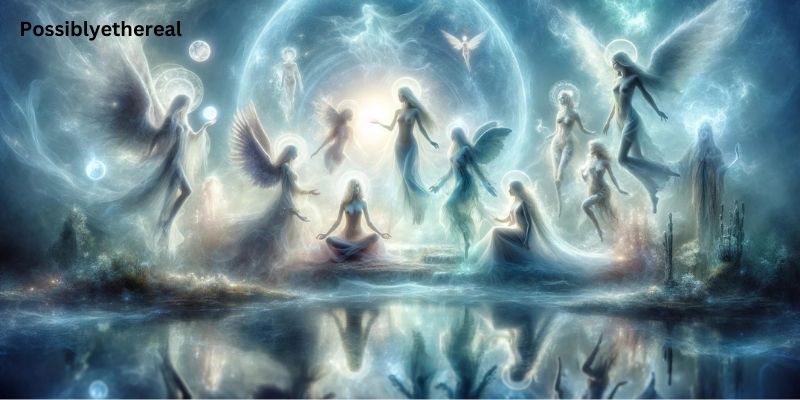
Possiblyethereal
Have you ever wondered about the existence of ethereal beings, entities that transcend the physical world? The concept of ethereal beings has fascinated humans for centuries, sparking curiosity and wonder. These possiblyethereal entities are often described in myths, folklore, and spiritual texts, leaving many to ponder their true nature and significance.
The best way to explore these mysterious beings is through a combination of ancient lore and modern interpretations. By delving into various cultural myths, literature, and scientific theories, we can gain a deeper understanding of what these entities might represent and their potential impact on our lives.
To uncover the enigmatic world of possibly ethereal beings and learn about their examples, significance, and more, read on. This journey into the unknown promises to be both enlightening and intriguing.
Understanding Ethereal Beings
Ethereal beings, often described as entities beyond the physical realm, have intrigued humanity throughout history. These beings are typically characterized by their intangible and otherworldly nature. They are believed to exist in a state that transcends the material world, often associated with spirituality and mysticism. Ethereal beings can take various forms, ranging from benevolent spirits to malevolent entities, each playing a unique role in different cultural narratives.
In many traditions, ethereal beings are considered to possess supernatural powers and wisdom, often acting as intermediaries between the divine and the mortal world. They are integral to numerous religious and mythological stories, symbolizing higher consciousness and spiritual enlightenment. Understanding these entities requires an exploration of their characteristics and their significance in various cultural contexts.
Examples of Ethereal Beings in Mythology and Folklore
What are examples of ethereal beings? Ethereal beings appear in countless myths and folklore around the world, each with unique traits and stories. One prominent example is the angels in Abrahamic religions, depicted as messengers of God with divine duties. In Hinduism, there are devas and asuras, ethereal beings representing good and evil forces, respectively. Greek mythology introduces us to nymphs and muses, ethereal entities associated with nature and artistic inspiration.
In addition to these, many cultures have spirits and ghosts that fit the description of ethereal beings. The Japanese folklore talks about yūrei, spirits of the deceased who linger in the physical world due to unresolved issues. These examples highlight the diverse ways in which ethereal beings are woven into the fabric of cultural narratives, each serving a distinct purpose in their respective mythologies.
The Significance of Ethereal Beings in Modern Culture
Ethereal beings continue to captivate modern culture, often depicted in literature, films, and television shows. These entities have become symbols of mystery, spirituality, and the unknown. In contemporary fiction, ethereal beings are frequently portrayed as guiding forces or antagonists, adding depth and intrigue to the narratives. Popular series like “Supernatural” and “The Witcher” feature a variety of ethereal entities, from angels and demons to spirits and other supernatural beings.
Moreover, the concept of ethereal beings extends to modern spiritual practices. Many people today explore these entities through meditation, channeling, and other spiritual practices, seeking guidance and enlightenment. The fascination with ethereal beings reflects a broader human quest for understanding the unseen and the transcendent, highlighting their enduring significance in our collective consciousness.
Theories and Beliefs About Ethereal Beings
The existence and nature of ethereal beings have been subjects of various theories and beliefs. From a spiritual perspective, these entities are often seen as manifestations of higher consciousness or divine forces. Many religious traditions hold that ethereal beings act as messengers or protectors, guiding humans towards spiritual growth and enlightenment. These beliefs are supported by numerous accounts of encounters and experiences reported by individuals throughout history.
On the other hand, some scientific theories attempt to explain ethereal beings through the lens of psychology and neurology. Certain phenomena associated with ethereal beings, such as visions or spiritual experiences, are often attributed to altered states of consciousness or brain activity. While the scientific community remains skeptical about the literal existence of such entities, the ongoing exploration of consciousness continues to fuel discussions and research into the nature of these mysterious beings.
The Fascination with Possibly Ethereal Beings
Why are people fascinated by the idea of ethereal beings? The allure of ethereal beings lies in their mysterious and otherworldly nature. These entities represent the unknown, sparking curiosity and imagination. The idea that there could be beings beyond our physical reality challenges our understanding of the universe, encouraging us to explore the possibilities of existence beyond the material world.
Furthermore, ethereal beings often embody qualities that resonate with human experiences and emotions. They symbolize hope, fear, guidance, and the eternal struggle between good and evil. This resonance with human emotions and experiences makes ethereal beings captivating subjects in both mythology and modern storytelling. The fascination with these beings reflects a deeper desire to connect with the unknown and to seek meaning beyond the tangible aspects of life.
How to Explore the Concept of Possibly Ethereal Beings
For those interested in delving deeper into the concept of ethereal beings, there are numerous resources and approaches to explore. Reading mythological texts and folklore from different cultures provides valuable insights into how these entities have been perceived throughout history. Books like “The Encyclopedia of Spirits” by Judika Illes and “The Element Encyclopedia of Magical Creatures” by John and Caitlin Matthews are excellent starting points.
Additionally, engaging with modern literature and media that feature ethereal beings can offer contemporary perspectives on these entities. Documentaries and shows like “Ancient Aliens” and “Ghost Adventures” explore the possibility of ghostly beings from both historical and investigative angles. For a more spiritual approach, practices like meditation, dream analysis, and energy healing can help individuals connect with the concept of ethereal beings on a personal level.
Conclusion
Ethereal beings, with their enigmatic and otherworldly nature, continue to fascinate and inspire people across cultures and eras. From ancient mythologies to modern spiritual practices, these entities occupy a significant place in our collective imagination. Whether viewed through the lens of spirituality, science, or storytelling, the exploration of possiblyethereal beings offers a unique journey into the unknown, encouraging us to ponder the mysteries of existence beyond the physical realm.
FAQs
Q1: What are examples of ethereal beings?
Ans. Ethereal beings appear in many cultural narratives and myths. Examples include angels in Abrahamic religions, devas in Hinduism, and nymphs in Greek mythology. Each of these beings possesses unique traits and stories, often symbolizing higher powers and supernatural phenomena.
Q2: What is an ethereal entity?
Ans. An ethereal entity is typically characterized by its intangible and otherworldly nature, existing beyond the physical realm. These beings are often associated with spirituality and mysticism, serving various roles in religious and mythological contexts. They can be benevolent, malevolent, or neutral, depending on the cultural narrative.
For more info visit: Findbestbizz





